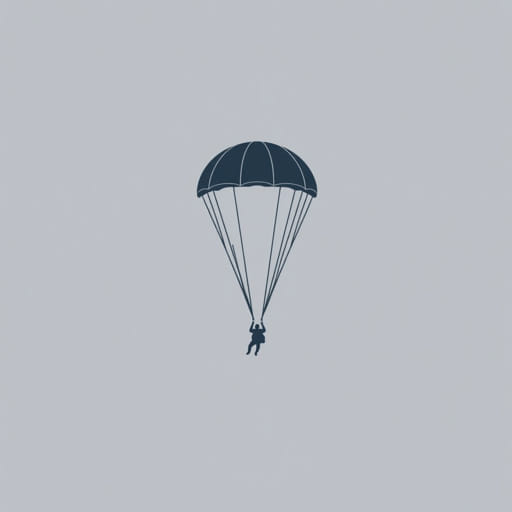The Story Of The Paratroops
Paratroopers, often referred to as paratroops, have been a symbol of elite military strength since their emergence in the early 20th century. Known for their daring jumps from airplanes into hostile territories, paratroopers are trained to conduct airborne operations that are both strategic and high-risk. Their role has evolved from simple tactical insertions to vital components of large-scale warfare. This is the story of the paratroops, a journey of innovation, courage, and transformation in modern military history.
Origins of Paratrooper Forces
Concept and Early Development
The idea of deploying soldiers from the sky was first conceived during World War I, but it wasn’t until the 1920s and 1930s that nations began experimenting with airborne troops. The Soviet Union is credited with developing the first organized paratrooper units, conducting large-scale parachute jumps during military exercises in the 1930s.
Other nations, especially Germany and Italy, observed the potential of airborne forces. Nazi Germany formed theFallschirmjäger(paratrooper units) under the Luftwaffe, and these soldiers would soon play a crucial role in early World War II operations.
Germany’s Early Successes
Germany’s use of paratroops during the invasions of Norway, the Netherlands, and particularly the Battle of Crete demonstrated their effectiveness in surprise attacks. Although the losses at Crete were heavy, the strategic value of paratrooper operations was clear. These missions showed how airborne forces could bypass fortified positions and strike deep into enemy territory.
American Paratroopers in World War II
Formation and Training
The United States entered World War II with no established airborne forces. That changed in 1940 when the U.S. Army created the first parachute battalion. By 1942, the 82nd and 101st Airborne Divisions were activated. Their training was intense, focusing on physical endurance, parachute handling, and coordination in chaotic environments.
Key Operations
American paratroopers played a crucial role in several significant operations:
- Operation Overlord (D-Day, June 6, 1944): Paratroopers were dropped behind enemy lines in Normandy to disrupt German defenses and seize key positions before the beach landings.
- Operation Market Garden (September 1944): The largest airborne operation of the war, aimed at capturing bridges in the Netherlands to allow Allied forces a direct route into Germany.
- Battle of the Bulge: The 101st Airborne’s defense of Bastogne became legendary, symbolizing the resilience and determination of airborne troops.
Post-War Era and Cold War Expansion
Airborne Forces Around the World
After World War II, many countries began to develop or expand their airborne units, recognizing their value in rapid deployment and tactical surprise. The United Kingdom’s Parachute Regiment, formed during the war, remained an elite force. Nations such as France, China, and India also established airborne brigades for both national defense and international operations.
The Cold War and Rapid Deployment
During the Cold War, paratroopers became essential for quick reaction forces. The U.S. 82nd Airborne Division, for instance, was known as America’s Guard of Honor and could deploy within 18 hours. Airborne units were strategically placed to respond to global threats, participate in peacekeeping missions, and support allied operations.
The Role of Paratroops in Modern Conflicts
Vietnam and Beyond
Paratroopers saw extensive use in the Vietnam War. Although jungle terrain reduced the number of airborne insertions, many paratroopers fought as elite infantry, known for their discipline and effectiveness. Paratroops were also active in other conflicts, such as the Korean War and various interventions during the Cold War.
21st Century Deployments
In the modern era, paratrooper units have adapted to new technologies and warfare dynamics. They have been involved in operations in Iraq, Afghanistan, and the Middle East. Their missions now include urban warfare, counterinsurgency, and rapid humanitarian response. While large-scale airborne assaults are less frequent, the flexibility and capability of paratroops remain invaluable.
Training and Brotherhood
Rigorous Selection and Preparation
Becoming a paratrooper is no small feat. Candidates must complete airborne school, where they learn parachuting techniques, aircraft exit strategies, and emergency procedures. Physical conditioning is paramount, and mental toughness is essential. The airborne badge, or jump wings, is a mark of honor earned through intense effort and commitment.
The Paratrooper Identity
Paratroopers develop a strong sense of identity and brotherhood. They rely on each other in high-risk situations and form tight-knit bonds. Their motto, Death from Above, symbolizes their role as elite, fearless warriors who enter battle from the skies.
Legacy and Symbolism
Cultural and Historical Impact
The story of the paratroops is woven into the broader narrative of military innovation and bravery. From the dramatic landings in Normandy to peacekeeping missions in the 21st century, paratroopers have left an indelible mark on military history. Their legacy is celebrated in museums, films, and veteran organizations around the world.
Medals and Honors
Paratroopers have received numerous awards for bravery and service. The Medal of Honor, Distinguished Service Cross, and other decorations highlight the courage shown by these airborne soldiers. Their sacrifices and achievements are remembered with deep respect.
The Future of Paratroops
Evolution in Tactics and Technology
As military strategies evolve, so do the roles of paratroopers. Future paratrooper units may incorporate advanced drone support, improved parachute systems, and integrated communications. Training will likely continue to emphasize both traditional airborne tactics and cutting-edge technologies.
Continued Relevance
Despite shifts in warfare, paratroopers remain a crucial asset. Their ability to deploy rapidly, adapt to changing environments, and execute precise missions ensures their ongoing importance. Paratroopers exemplify courage under pressure, and their story continues to inspire soldiers and civilians alike.
The journey of the paratroops from experimental units to elite global forces reflects the evolution of modern military power. Their legacy is built on bravery, sacrifice, and unwavering determination, and their story remains a vital chapter in the history of military warfare.
